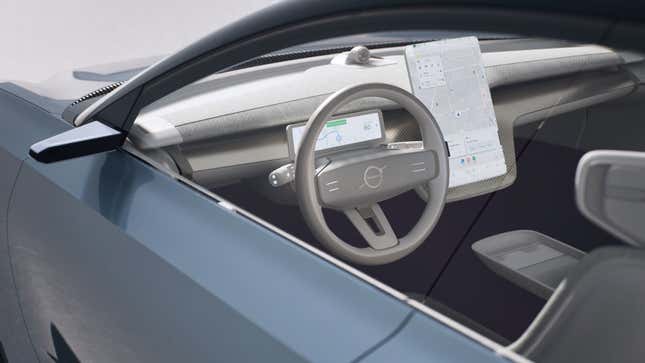Earlier this week, Volvo revealed a partnership with Epic Games, the producers of Unreal Engine and, among other things, Fortnite, to bring the company’s state-of-the-art rendering technologies into the car for “photorealistic” graphics on in-car displays. Volvo’s forthcoming electric flagship, planned for debut later this year, will be its first product to benefit from the collaboration.
It’s a strange announcement; for as much as carmakers like to hype the improved speed and ease-of-use of their latest interfaces, Unreal Engine will rather be used to deliver “sharper renderings, richer colors and brand new 3D animations.” Amid all of the technological headaches modern cars cause their owners, I have to say I’ve never heard anyone complain “the colors on the screen just don’t pop enough.”
Indeed, in its press release announcing the partnership, Volvo comes across less like an automaker and more like a gaming startup. Those aforementioned visual benefits are supposedly just the start “as Volvo Cars developers continue to push the graphic envelope.” At the same time, the Swedish brand promises that none of this visual innovation will come at the expense of its historical commitment to safety, telling The Verge that “distracting the driver in the wrong way” is unacceptable.

The only obvious practical benefit to “next-gen graphics” in a car pertain to how the vehicle uses it to communicate with passengers. And in the case of Volvo — a company targeting EVs and semi-autonomous transportation — Unreal Engine would come in handy less for “photorealism,” as the release puts it, and more for rendering speed.
Any modern car with assisted-driving features attempts to model a vague, symbolic recreation of the path ahead to inform the driver of obstacles it has sighted out through sensors and cameras. That’s because in this nebulous “cars-can-drive-themselves-a-little” world in which we live, it’s not only important that your car sees a tree in the road; it’s also important that you know your car sees a tree in the road.
Anything that expedites that pipeline of detection to representation is useful, and maybe there’s something in Unreal Engine 5 or whatever version of it Epic is developing for cars that facilitates that. It sounds like that might be part of the ambition here, according to a video Epic released detailing how Volvo plans to use the tech, embedded below.
Beyond that, though, I’m struggling to imagine how more lifelike graphics will transform the Volvo driving experience. Or make it markedly different from, say, Rivian’s, whose trucks also use Unreal Engine. OK, maybe the digital model of the C40 Recharge you see on the center display while sitting in a C40 Recharge will employ physically-based rendering and raytracing, so it’ll look damn near the real thing. And if you open the crossover’s actual lift gate, the lift gate in the model will open, too — conveying the same value of information as an instrument-cluster icon with a dumb LED behind it. It will be prettier though, that’s for sure.
One more point: Depending on how far Volvo plans to push the “photorealism” thing, this could all get quite resource-intensive. The automaker doesn’t say precisely which version of Unreal it plans to use, but Epic’s latest release is beefy to put it mildly, even for high-end gaming PCs. Then again, some manufacturers are angling to put full-fat GPUs in their cars, so maybe computing muscle won’t be an issue.